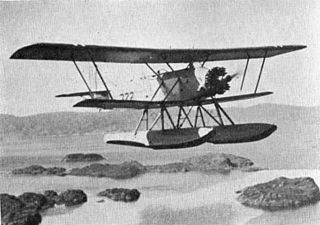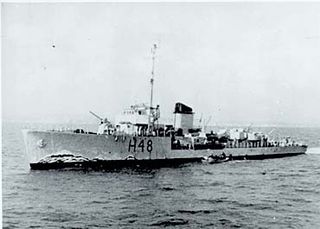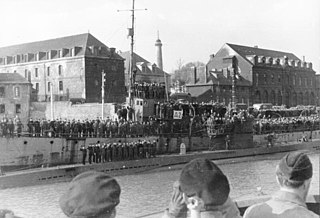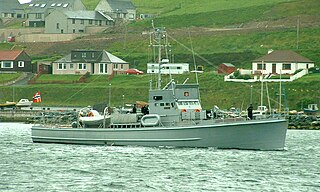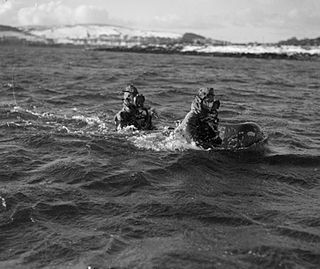Boats used in the Shetland Bus operation
M/B Aksel (M40G)

Aksel of Giske, 65 feet (20 m) long, the first "Shetland Bus" boat, arrived Shetland on 5 May 1941 with 20 refugees. Skipper Anders Nærøy chose the Aksel on the first official "Shetland Bus" mission, on 30 August 1941. Aksel later made several journeys to Norway with different skippers.
On 8 December 1942, Aksel, on its way from Kristiansund, skippered by Bård Grotle, sent out a SOS signal 200 nautical miles (370 km) north of Shetland. A Catalina flying boat and an MTB were sent out to search for the vessel. The next day the Catalina found the lifeboat with the crew, and the Aksel nearly sunk nearby. The sea was too rough for the aircraft to land, and the MTB had to return to Lerwick before they reached the lifeboat because of lack of fuel. The crew were never found again. Several aircraft and boats searched for days, but the crew of six were lost.
M/K Heland (M5V)
Owned by Sevrin Roald, Arne Roald and Olav Røsvik, of Vigra. Built by Einar Helland, Vestnes 1937. 60 feet (18 m) long, with 85 hp (63 kW) Haahjem engine.
On its first voyage in November 1941 the Heland was skippered by one of the owners, Sevrin Roald, and made for Shetland, with two Company Linge agents Karl Johan Aarsæter and Åsmund Wisløff aboard. Using the false name M/K Per, it managed to get undamaged through the same storm in which the Blia disappeared, and returned to Norway with supplies to other agents.
Another agent transport was made in January 1942. On 27 February 1942, the Heland arrived at Lunna with 23 refugees, among them, Milorg's district leader in the Ålesund area, Trygve Rypdal and family. Sevrin Roald brought his wife, Inga, with him and they both became part of the land crew in the "Shetland Bus" operation in Scalloway.
As a "Shetland Bus", the Heland made several tours to Norway, mostly skippered by August Nerø, but with other skippers too. There were many narrow escapes, but the vessel always returned safely to Shetland. In 1943, when the submarine chasers arrived, the Heland became a reserve vessel and made transport voyages to Scotland.
When the war ended, the Heland returned to Norway and became fishing vessel again. In 1971, it was donated to Sunnmøre Museum. The Heland is now preserved as a typical representative fishing vessel of the "Shetland Bus" fleet.
M/B Vita (H95B)
Built by Lindestøl Shipyard Risør in 1939 for Lorenz Knudsen a.o., Brandanes. The Vita had a 40 hp (30 kW) Wickmann engine.
The Vita arrived at Shetland on 9 May 1940 with four Norwegian Navy officers and two other refugees aboard. The Vita started as a "Bus" boat before the "Shetland Bus" was officially established. Her first voyage to Norway was on 22 December 1940, skippered by Hilmar Langøy. The next was on 27 March 1941, this time skippered by Ingvald Johansen, who became her skipper for the rest of her missions. Johansen's crew were Åge Sandvik, H.W. Olsen, Jens Haldorsen and J. Hermansen.
In May 1941, they picked up the twelve refugees from M/B Signal (M331A), which had suffered an engine failure and was drifting 60 nautical miles (110 km) off the Norwegian coast. In mid-September 1941, the Vita made a 900-nautical-mile (1,670 km) journey to North Trøndelag.
Johansen did not always follow the security rules. Once he posted a letter in Norway to his fiancée. He told her when and where he would return, and asked her to meet him and come with him to Shetland. The girl got the letter, met him, and followed. In Shetland they got married, and Johansen was not punished.
Vita made seven successful voyages to Norway before her last. On 22 September 1941, she journeyed again to North Trøndelag, this time to Rekøy, to pick up some refugees. A traitor had told the Germans about the transport, and the Vita was seized and the crew arrested. The crew spent the rest of the war in prison, while the Germans used the Vita as a watch boat. After the war she became fishing boat in the North Sea again, until she was donated to the "Trondhjems Sjøfartsmuseum" (a maritime museum in Trondheim) in 1990. In 1995 she was taken over by "Kystmuseet i Sør-Trøndelag" (Sør-Trøndelag Coastal Museum) at Hitra. She is currently being renovated by local craftsman Per Johnson.
M/B Olaf (M73V)
Owned by Ansgar Sønderland and Johan O. Rørvik, Vigra. 52 feet long and with a 60 hp (45 kW) June-Munktell engine.
The owners gave their approval to use the Olaf in a refugee transport. It arrived at Lerwick on 30 September 1941 with seventeen refugees. The vessel was handed over to the "Shetland Bus" operation and Per Blystad from Fana became skipper. In the winter of 1942, the 'Olaf' made five voyages to Norway with agents and supplies, and returning with refugees. The crew on these tours were; Olai Hillersøy, Arne Nipen, Leif Kinn and Olav Kinn. On 17 April 1942, the Olaf went to Telavåg with the Company Linge agents Arne Værum and Emil Hvaal. The agents were discovered by the Germans, and that led to the "Telavåg Tragedy", were the whole population were jailed or put into concentration camps, and all the houses burned in revenge for two German Gestapo officers' deaths.
The Olaf was attacked and damaged by German aircraft several times, but it always managed to get back to Shetland. The worst damage occurred on 12 May 1942. Three crew from the wrecked Frøya, along with some others, went out with the Olaf to search for a raft with four of the Frøya crew. They were attacked five times by a German Dornier bomber. The vessel was severely damaged, and some of the crew wounded. One of the three men from the Frøya, Hans Johansen, later died of his wounds. The Olaf made no more journeys and after the war it was returned to the owners who sold it in 1948.




